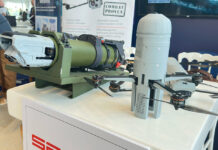Radar developer Raytheon and L-3 Communications are designing new systems to improve the common operating picture obtained by field commanders. “Getting intelligence and surveillance information to the right place at the right time is the key to network centric warfare,” said Jerry Powlen, vice president, Raytheon Network Centric Systems’ Integrated Communications Systems.
“This solution addresses this very real challenge by bringing new technology to the edge of the battlefield.” said Powlen. Raytheon’s solution establishes seamless, robust and rapid network connections and maintains them regardless of operational conditions in the air, on land, or at sea. It has been field tested in a military environment and enables the warfighter to focus on the primary mission. Resilient mobile ‘ad hoc networking’ is a critical element for high-data rate applications, where significant amounts of information can be lost if communications are down — even if only for a matter of seconds.
According to Susan Opp, president, L-3 Communications Systems-West, advanced software-defined modem technology developed by L-3’s supports data rates in the 100s to 1000s of millions of bits per second, in either continuous or pulsed modes. “This capability allows allow aperture sharing with radar pulses” explained Opp “Sharing critical information over radar apertures mitigates the need for additional platform space because existing radar apertures are already installed on aircraft, ground vehicles and ships.”



















